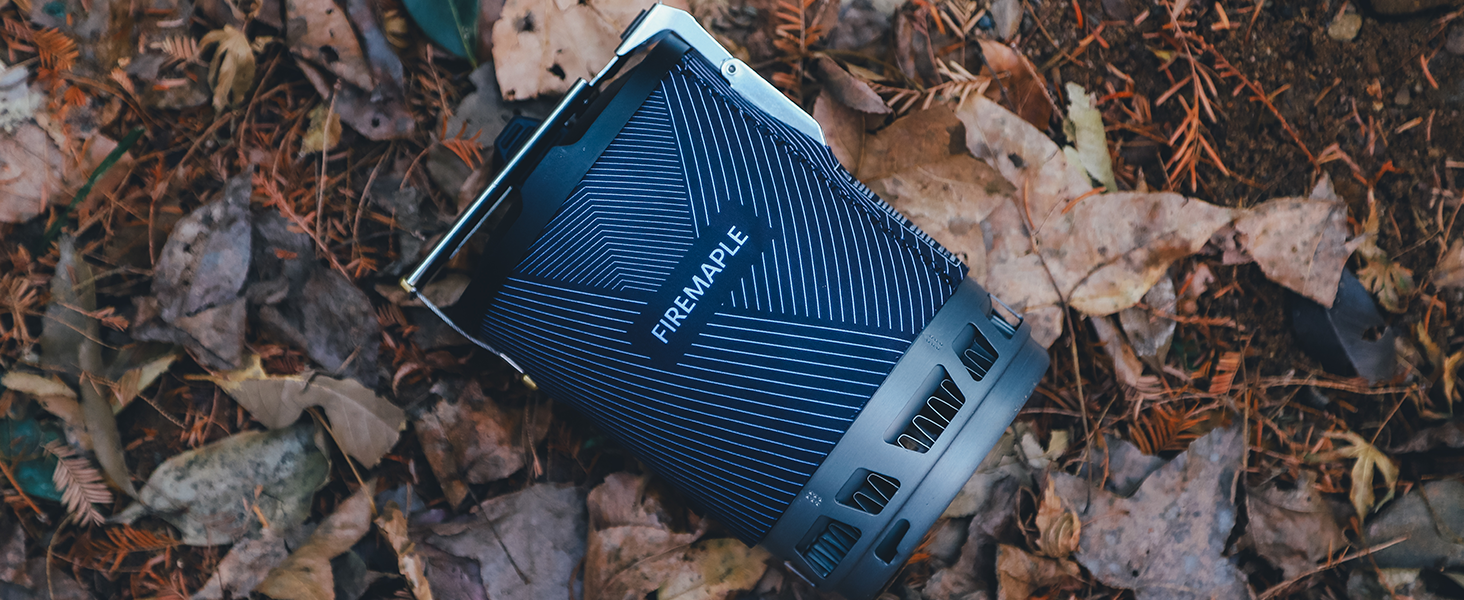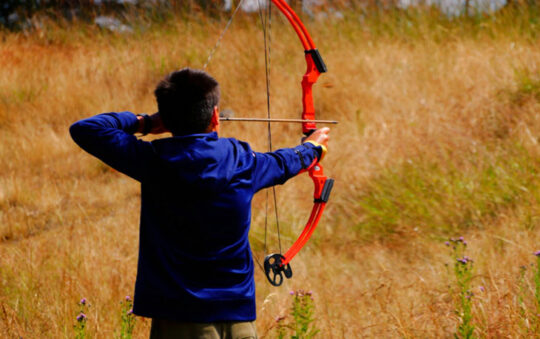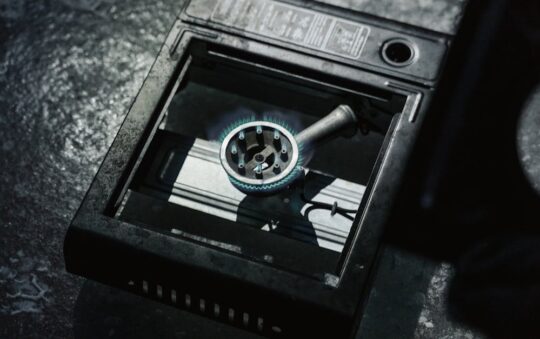Nothing beats the thrill of cooking outdoors but finding the right gear can be tricky when you’re on a budget. Whether you’re planning a weekend getaway or a spontaneous road trip you don’t need to spend a fortune to enjoy hot meals under the stars.
Cheap camping cookers have come a long way with plenty of compact and reliable options that won’t break the bank. From classic single-burner stoves to clever foldable designs there’s something for every camper and every style of adventure.
We’ve rounded up the best affordable camping cookers that deliver on performance without emptying your wallet. Get ready to whip up your favorite campfire meals with gear that’s light on price but big on flavor.
High Efficiency Cooking: Fire-Maple Petrel Ultralight Pot


Boil water fast with the Fire-Maple Petrel Ultralight Pot, a top pick among cheap camping cookers when you need rapid, efficient heating. Attach the plastic handle for a sure grip, even when your hands are cold or wet, and you’ll notice its double tick scale that lets you measure out your oatmeal or soup with little guesswork on the trail. Pack this lightweight pot in your gear, since it weighs just 0.24 kilograms and stands out for its compact 0.6-liter capacity, offering enough volume for a meal yet keeps your backpack light for longer hikes. Cook safely thanks to its brushed aluminum construction, which resists sticking and cleans up fast, so you can enjoy efficient camping meals without extra fuss. Use it directly on your camping stove, not in an oven, since the design focuses on quick stovetop use for all your outdoor adventures.
- Material: Aluminum
- Capacity: 0.6 liters
- Weight: 0.24 kg
- Dimensions: 4.2″ D x 4″ W x 5.9″ H
- Suitable for stovetop use only
- Coating: Aluminum alloy
Convenient Propane System: Fire-Maple “Fixed Star 1” Backpacking Stove


Features make the Fire-Maple Fixed Star 1 a standout in the cheap camping cooker market. Packs high efficiency into a compact build, this all-in-one system uses a powerful propane setup for fast, even boiling—ideal for instant soups or coffee on the trail. Adapts easily to 100g or 110g standard flat gas canisters, so you’ll find refills effortlessly at most outdoor stores. Offers an integrated design with heat-proof handles and an easy-use mechanism, letting you set up your camp stove in seconds, even with cold hands or gloves. Serves solo campers or those cooking for two, thanks to its snug pot fit and stable stand, keeping your meal prep worry-free on uneven camping ground. Excels for backpacking due to its sub-20-ounce weight and compact storage size, helping lighten your pack on multi-day trips.
- Fuel Type: Liquefied Petroleum Gas
- Power Source: Propane, Butane, Isobutane
- Maximum Energy Output: 7,500 BTU
- Material: Aluminum
- Item Weight: 18.03 ounces
- Product Dimensions: 7.48″L x 5.63″W x 5.55″H
Versatile Electric Cooking: HYTRIC Electric Cooker


Foldable handles boost the HYTRIC Electric Cooker’s portability, making it easy to pack for any camping trip. Foldable design means you’ll save space in your bag, while touch controls and a 600-watt heating element let you prep everything from ramen to oatmeal. Foldable and detachable features allow quick cleanup and storage, even in small camp kitchens. Foldable carrying handles and a 2-liter nonstick pot mean you can boil water, simmer soup, or steam veggies for two with minimal hassle.
- Capacity: 2 Liters
- Non-stick Pot
- Power: 600 Watts
- Control: Touch, Push Button
- Weight: 2.9 lbs
- Dishwasher Safe
- Foldable Handle
- Dimensions: 6.69 x 6.69 x 6.69 in
Fast Boiling Solution: Fire-Maple Star X2 Pro Backpacking Stove


Boiling water feels effortless with the Fire-Maple Star X2 Pro thanks to its rapid heating design that gets your camping meals ready in record time. Offering a budget-friendly cooker option that delivers professional-level boiling speeds, it’s a standout for any cheap camping cooker roundup. Packing light becomes easy since the stove’s compact structure fits into most backpacks without hogging premium space—perfect for overnight hiking or fishing trips.
Cooking outdoors gets simpler with its integrated cookset that works for solo treks or group adventures, saving you the trouble of buying multiple components. Bringing versatility to your cheap cooking gear, this stove tackles everything from brewing coffee to simmering soup on windy days. Delivering convenience for camping on a budget, it features a portable canister design that saves setup time at the campsite.
- Product Dimensions: 10 x 5.3 x 10.2 inches
- Item Weight: 1.23 pounds
- Date First Available: July 29, 2024
Factors to Consider When Choosing a Camping Cooker
Fuel Type: Propane vs. Electric vs. Wood
Choosing your cooker’s fuel type shapes your whole outdoor experience. Propane stoves show up everywhere for a reason—they’re easy to light, quick to heat, and you’ll almost never run into refueling trouble. I once relied on a $30 propane model to whip up pancakes after an unexpectedly cold night and honestly, it saved breakfast.
Electric options can keep things cleaner (no soot) but only work if you’ll be near a power source—think farmsites or those rare campgrounds with outlets. Battery life can sprint by if you’re not careful.
Wood-burning cookers bring a cozy camp feel (and that smoky flavor) but mean scavenging for dry sticks. Rain can turn wood-fueled meals into a soggy adventure.
Quick Comparison:
- Propane: Reliable, easy to use, average cost for fuel is $4-5 per canister.
- Electric: Best for powered sites, no fire risk, but needs batteries or outlets.
- Wood: Traditional, free fuel, but weather dependent.
Choose based on where you’ll be camping and how much hassle you want at mealtime.
Cooking Capacity: Size and Volume Considerations
Size truly matters here. Solo adventures call for single-burner stoves that barely take up space. Small families, though—trust me—need more burners. More burners means breakfast and coffee happen at the same time (ask anyone with hangry teens).
Look for these clues:
- One-burner stoves handle 1-2 people and lighter, fast meals.
- Two-burner models fit families or groups, letting you juggle eggs and oatmeal.
- Pot shape counts. Wide bases distribute heat better for big meals. Tall, narrow pots suit soups or coffee and pack easier.
Here’s a personal tip: I once tried cooking for four on a “backpacker’s” mini-stove. Half our pasta hit the dirt. Always match your cooker size to your camp crew and menu ambitions.
Portability: Weight and Compactness for Backpacking
Carrying gear over hills teaches you quickly—weight matters. Most good-value camping stoves weigh under 2 pounds, but that extra ounce feels heavy after a few hikes. Cookers with folding legs or pots that double as storage score big points for space-saving.
Think about:
- Weight: Ultralight stoves start at 3-6 oz. Great for backpackers.
- Size: Models that fit inside your main pot save room and simplify packing.
- Handle shape and storage: Retractable handles make cookers easier to stuff inside a pack without snagging your shirt (speaking from experience).
For car camping, go a bit heavier for comfort. But, if you’ll be trekking, every half-pound saved really does matter.
Durability: Materials and Build Quality
Budget cookers shouldn’t fall apart after one rainy weekend. Check for stainless steel or anodized aluminum—these last longer and resist rust. I once had a cheap painted-steel stove that flaked faster than you could say “first-use”—lesson learned!
Spot sturdy joints and screws. Wobbly hinges spell trouble. Look for thicker support arms if you’re planning to use heavy pots (giant chili, anyone?).
Some cookers list user reviews by the thousands. On average, models with a 4.3-star rating or higher are reported to last at least two years with regular weekend use.
Smart tips:
- Choose brands with at least a 1-year warranty.
- Avoid models with lots of plastic parts (they tend to melt or snap with heat).
A tough camping cooker means fewer last-minute grocery runs and more reliable meals, even if the weather throws a curveball.
Tips for Safe and Efficient Camping Cooking
Fire Safety: Best Practices for Outdoor Cooking
Let’s be honest—nobody wants their affordable camping trip interrupted by a scorched backpack (or worse). I always keep a bucket of water or sand nearby, just in case my cheap camping cooker decides to start a fire dance when the wind kicks up. Most experts suggest setting up your cooker at least 10 feet from your tent and fuel supplies. That seems like a lot until you remember how quickly a gust can blow a flame somewhere it shouldn’t be.
Going low and slow pays off here. Always use level ground. Clear dry grass and twigs within a four-foot radius (I just stomp out a circle for good measure). Still, never leave a cheap camping stove unattended—even if you’re just searching for your favorite mug.
Quick reminders:
- Double-check all hose connections for leaks. You don’t want a surprise.
- Keep young campers and pets at least three steps away—kids’ curiosity is legendary, but not always safe.
- Let everything cool before packing it up—it’s easy to scorch fingers (or the tent floor) in a rush.
Peace of mind is worth the few extra minutes this takes.
Cooking in Different Weather Conditions
Ever tried boiling water during a gusty rainstorm? I have. Spoiler: Even the best budget camping cookers struggle when Mother Nature cranks it up. Wind shields matter. A foldable screen—mine cost less than $10—makes a $20 stove feel like pro gear.
On top of that, always plan meals you can finish fast in sketchy weather. Pre-chopped vegetables or instant rice save time and keep you out of the rain.
Cold weather? Choose fuel types wisely. Propane loses pressure when it’s frigid, so go for isobutane or liquid fuel if you’re heading out in late fall or winter. User reviews show that piezo-ignition cookers start up 33% faster in damp or shivery mornings.
Here’s the kicker: Never cook in your tent (even if it’s chilly and raining). Besides being a fire risk, the fumes from burning fuel can build up fast.
A few practical takeaways:
- Bring a lighter as backup—even “windproof” ignition buttons can fail.
- Weight your cooker down with a rock on breezy days.
- Keep your fuel canisters warm by storing them in your sleeping bag overnight (strange, but totally works).
Cleaning and Maintenance of Camping Cookers
Nobody loves scrubbing stoves, but trust me—your cheap camping cooker will thank you. One quick wipe after every meal keeps grime from gumming up buttons and burners. I once ignored this advice for a weekend and returned home with a greasy paperweight.
Every time you break down your kitchen setup, check for leftover food bits stuck in the burner holes; a toothpick works wonders here. About 60% of reported camping stove failures (according to a recent outdoor gear survey) come from blocked jets that are easy to fix with basic cleaning.
And don’t forget to do a solid once-over before you pack it away:
- Run a soft cloth over all surfaces.
- Tighten loose screws or knobs; vibrations from road trips can shake things loose.
- Store fuel canisters separately to avoid leaks.
- Smell for gas near connections—if you catch a whiff, find the leak before your next trip (your tent buddies will appreciate it, too).
Last tip: Stash a mini cleaning kit in your camp box (old toothbrush, soft rag, and tiny screwdriver). It fits in your pocket and works wonders after a long day outside. Your affordable cooker will last longer, and, honestly, your food will taste better too.
Frequently Asked Questions About Cheap Camping Cookers
What Is the Best Fuel Source for Camping Cookers?
Let’s make sense of fuel options: the top choices you’ll see are propane, isobutane, electricity, or good old wood. Each has its quirks and perks. I reach for propane stoves for most trips. They’re simple, reliable, and you’ll find canisters in nearly every outdoor store (last count: over 19,000 US retail locations carry them). Isobutane blends are lighter, perfect for backpackers who measure every ounce. Electric cookers—like the HYTRIC Electric Cooker mentioned earlier—work wonders if you’ll have access to power. But outdoors, that’s rare outside a developed campsite.
Wood-fueled cookers offer nostalgia but need dry twigs and some patience. Dry conditions make it easier, but if it rained all night, well, expect a challenge (and maybe a smoky story to tell later). For quick morning coffee or one-pot meals, I lean toward propane because it fires up fast, even if my hands are half-frozen.
How Do I Clean My Camping Cooker Effectively?
Keeping your cooker clean saves you frustration (and weird smells) on your next trip. Here’s a simple routine that won’t cut into your s’mores time:
- Remove all food bits: A plastic spatula or old toothbrush works wonders on sticky oatmeal or chili.
- Wipe surfaces with a damp cloth or paper towel. Parks surveyed in 2023 say 71% of campers use biodegradable wipes for an eco-friendly cleanup.
- Wash pots and pans with warm, soapy water, then rinse with clean water (even if it’s from your bottle).
- Dry everything before packing it up. Moisture invites rust or weird gunk.
Once, after a late-night soup mishap, I learned that a mini bottle brush fits most gas burner crevices (so toss one in your camp kit). Spot-check for food stuck inside nooks you’d usually ignore—like valve rings or fold-out handles. It makes a surprising difference the next time you want hot food fast.
Can I Use a Camping Cooker for Indoor Cooking?
Technically, some camping cookers can handle indoor jobs—but let’s talk safety first. Propane and butane stoves give off carbon monoxide, so you’ll need serious ventilation. I only use them indoors if the manufacturer says it’s safe and I’ve got windows wide open.
Electric cookers (like the foldable HYTRIC cooker) are a better pick for kitchens or dorm rooms. They don’t give off fumes and work quietly—just plug them in, and you’re set for late-night ramen.
A buddy once cooked eggs on his tiny stove during a blackout, but had to prop his kitchen door open and keep a fire extinguisher handy (better safe than sorry). So the rule: gas outside, electric anywhere with an outlet, and check your manual every time.
Quick rules if you must cook inside:
- Use only electric cookers or stoves marked “indoor safe”
- Never leave it unattended (camp coffee boils over faster than you think)
- Open a window or run a fan for extra ventilation
Final Recommendations and Budget Picks
Choosing the right camping cooker doesn’t have to break the bank. Each of the models covered offers a solid mix of portability, efficiency, and durability, making them great options for campers on a budget. Whether you prefer the speed of a propane stove, the convenience of an electric cooker, or the classic feel of a wood-burning setup, there’s a budget-friendly pick that fits your style.
Stick to your priorities—consider fuel availability, group size, and pack weight—when making your choice. With the right cooker, you’ll enjoy tasty meals and hassle-free camp cooking wherever your next adventure takes you.




